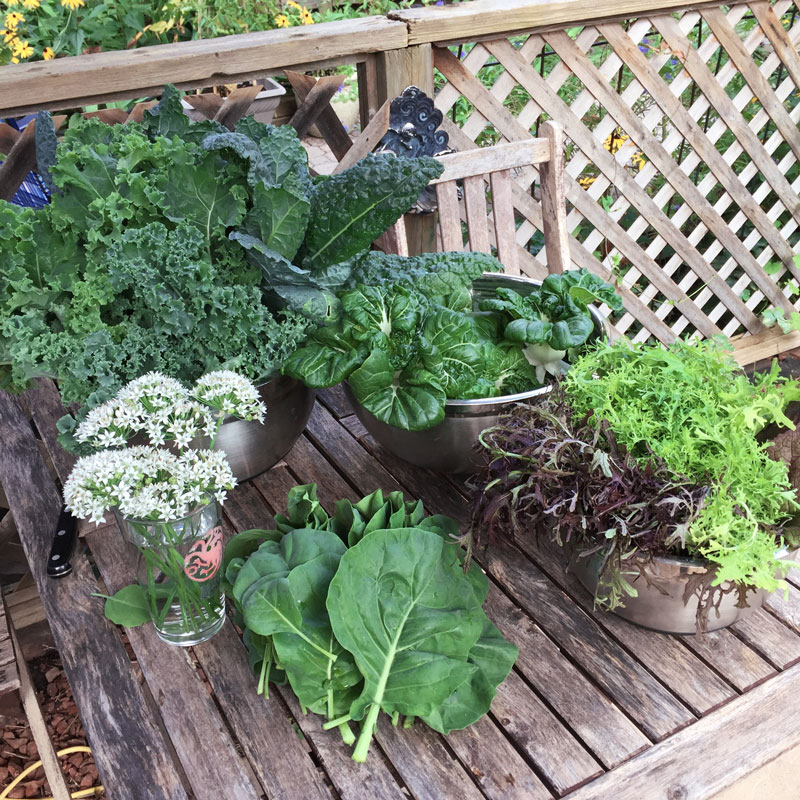My Top 10 Cold Hardy Veggies

How early in the season can a vegetable garden be planted? Early! You might be surprised to learn that there are many vegetables like peas, kale and spinach that prefer growing in cool weather and actually grow poorly during the summer heat. Knowing when and how to plant cold-loving plants is the key to getting the most out of the early growing season. Amaze your friends and family with baskets full of beautiful, bountiful cold-hardy harvests. In honour of Earth Month, I highlight here my top 10 favorite cold hardy veggies that I love to plant in early spring, usually around mid-April.
No matter what crops you grow, make sure to get top quality seeds from local growers. Tried and true, organic seed from a trusted source is worth the few extra pennies. Not only will you find varieties that grow well in your area, you’ll be helping to keep small businesses thriving. We are so fortunate to have some fabulous seed growers here in Toronto. Urban Harvest is one of our favorites. And they will mail them if you are out of town. (Unsponsored, she is just our pal.)
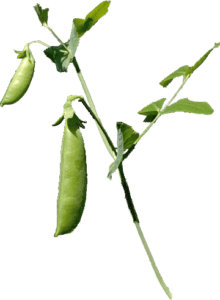
Peas
Shelling peas, sugar snap peas or snow peas can be sown from seed in early spring, as soon as the soil can be worked. (That means defrosted to about a depth of 4 to 5 inches.) Some are short-growing bush varieties while most require a trellis on which to climb high. Choose a sunny spot and sow thickly as peas are happy growing close together. You may find yourself eating them right off the vine while you’re tending the garden so plant lots of these sweet treats so your family can have some too.
Favorite Varieties of shelling peas (you don’t eat the shell, only the peas inside) Arrow or Lincoln. Sugar Snap favs (you eat the entire shell and the peas) are Sugar Ann or Super Sugar Snap. Want to try something different? I love the beautiful Blue-podded Capucijner Peas (Pisum sativum cv.) which can be eaten whole as snow peas or dried in soups. An heirloom variety grown in the 1600 by Franciscan Capuchin monks.
Swiss Chard
Swiss chard is a gorgeous, leafy green that is delicious raw in salads, makes a great bread substitute for lunchtime wraps or can be steamed or wilted with a little butter and garlic. I like to blend it in my morning smoothies. Its vivid, multi-coloured stems brighten up your garden with brilliant streaks of yellows, pinks, whites and reds.
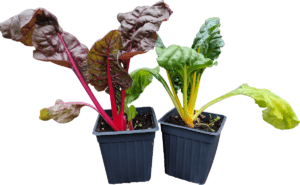
You can start Swiss chard seedlings indoors in the winter and plant them out for an instant April garden or direct sow the seeds. Or do both for multiple successions! The only trouble with this cold hardy crop is that it can attract leaf miners, flying insects that lay their little white eggs on the leaves. The eggs develop into larvae that mine their way through the leaf and leave a distinctive tunnel pattern in their wake. The best way to foil these creatures is to lay a sheet of floating row cover over the plants or seeds at planting time to prevent the leaf miner from laying her eggs.
Spinach
Spinach is in the same family as Swiss Chard, but it doesn’t get quite as big or last as long in the garden. It’s an early season treat that can grow well in shadier gardens. It’s a great crop for containers and pots too. It is susceptible to the same leaf miner pests as chard so cover it with floating row cover and avoid these pesky flying pests. We like to use Agribon 19 and get it at William Dam Seeds. Get the handy ground staples too. They’re great for securing the row cover. Both can be reused season after season if you take care of them. I throw the row cover in the washing machine for an easy, end-of-season clean up.
Kale
Kale is such a versatile crop. It can be harvested young to be tossed in salads or you can let it grow all season long for non-stop kale chips. Lots of people love to hate kale but many more recognize its incredible health benefits. It’s the last crop standing in December and it’s among the first crops planted in the spring. There are so many different varieties too which add colour and texture to your garden or your dinner plate. A must have in every garden. Watch for the pretty, flitty cabbage moths who lay their eggs on the leaves. Their babies develop into the surprisingly hard-to-spot cabbage worm that hide in the veins of the leaves. Their munching is unmistakable, so where there are holes, there are likely to be cabbage worms. Hand pick them off and feed them to the birds. Once they know where to find these velvety little critters, they’ll visit this crop on their own. Kale is another crop that can be started indoors and planted out as a young seedling or direct sown.
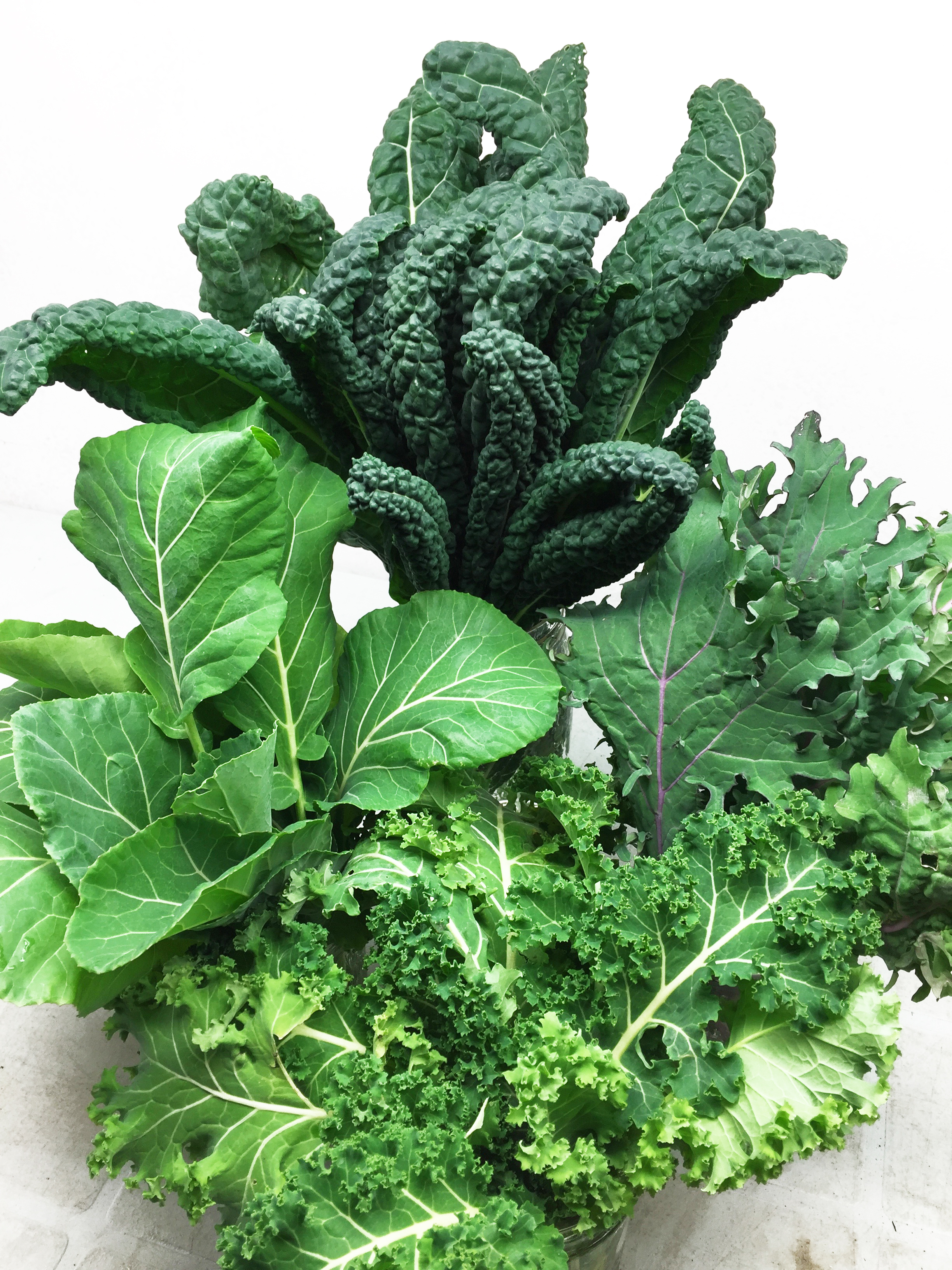 |
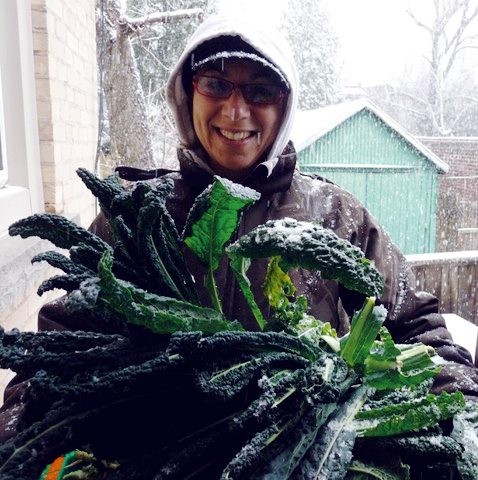 |
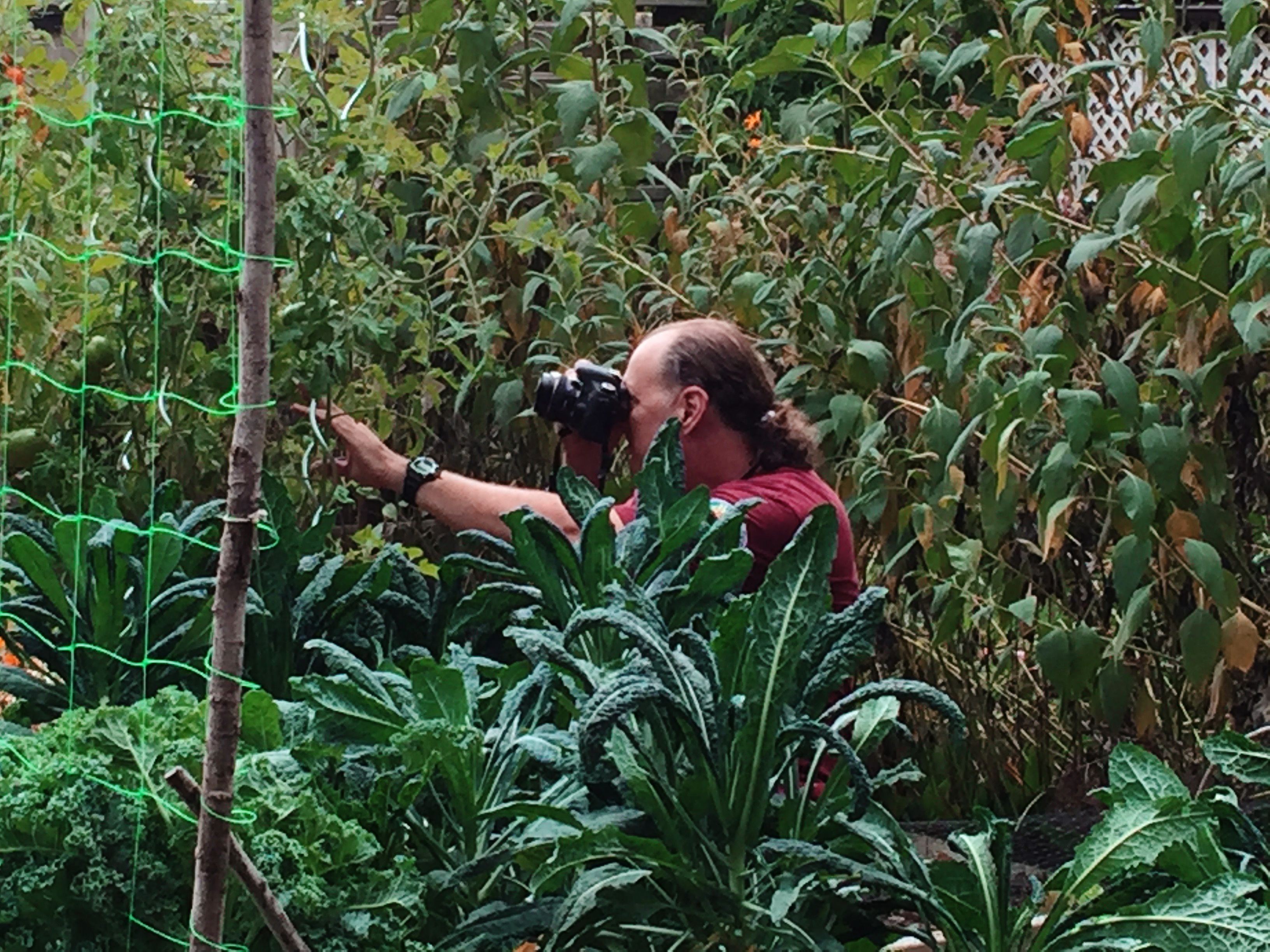 |
| So many varieties! | Kale going strong in December. | Location scouting for Jurassic Park in a mid-summer kale jungle. |
Kohlrabi
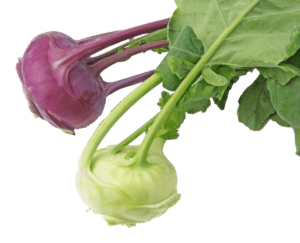
Kohlrabi is a personal favorite of mine. I’m always surprised when people don’t know this delicious vegetable. A green or purple bulging orb from which long stemmed leaves fan out makes it look a little like a Dr. Seuss character. Peel it and eat it raw for a crunchy, juicy snack that tastes like a mild radish, or harvest and stuff the leaves and bake like you would cabbage rolls. It’s best direct sown in my experience.
Radish
Radish a great root crop for the most impatient of gardeners, it grows from seed to harvest within a month. Purple, red, white, purple, pink and even black roots add colour to salads. Kids love to harvest them, but the spice is a bit of a deterrent to their eating enjoyment. Best planted in early spring or late summer. They are not happy in the heat of summer and will bolt (flower and go to seed) then turn woody. Try the vibrant “watermelon” variety Rido Red from Westcoast Seeds.
Hakurei Turnip
I was first introduced to these glorious, little gems by local farmer and artist Amy Cheng who is the farm market manager at Black Creek Farm in Toronto. These smooth, white turnips are exquisite when harvested radish-size but just as smooth and tasty if you let them mature to the size of a beet. They are delicious raw or stir fried. Be sure to eat the greens! Another fast growing, must-have in your early spring garden.
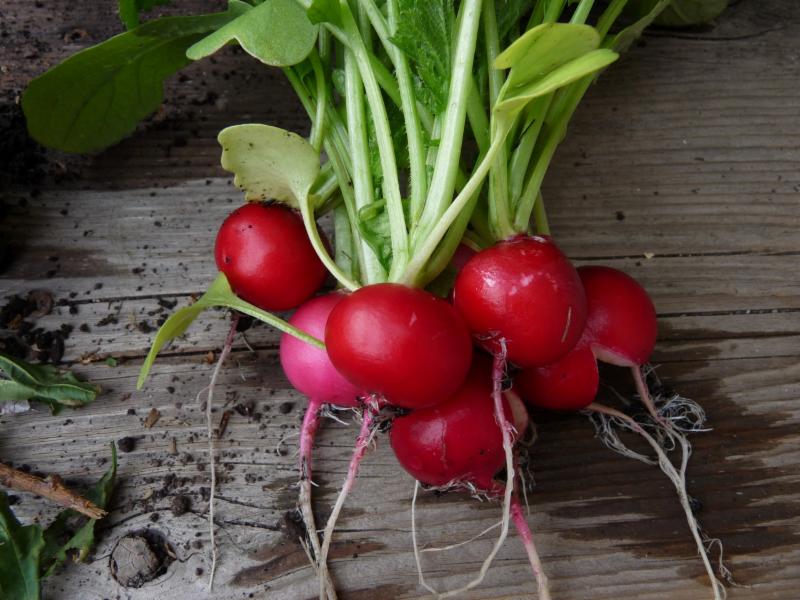 Radish |
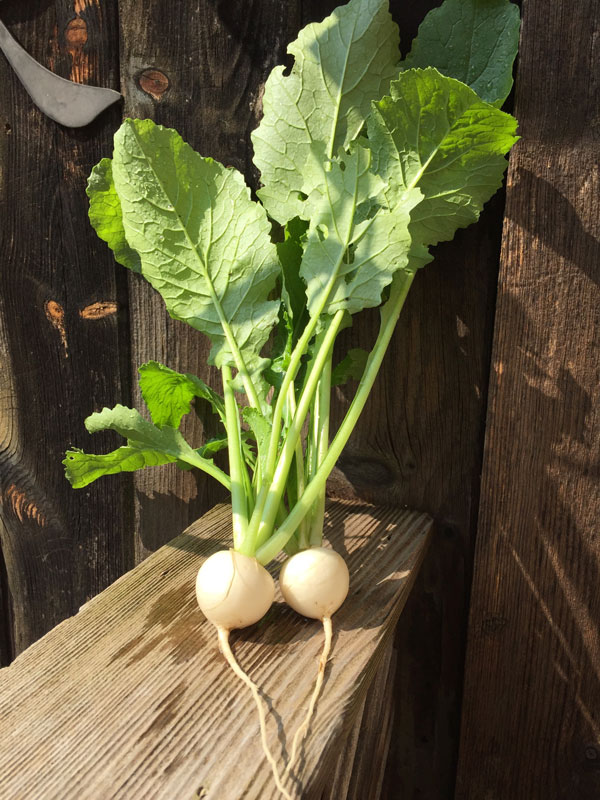 Turnip |
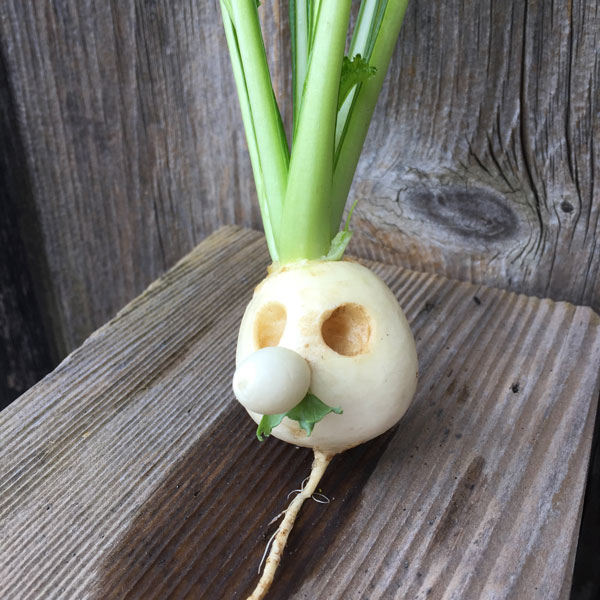 Silly Turnip |
Chives
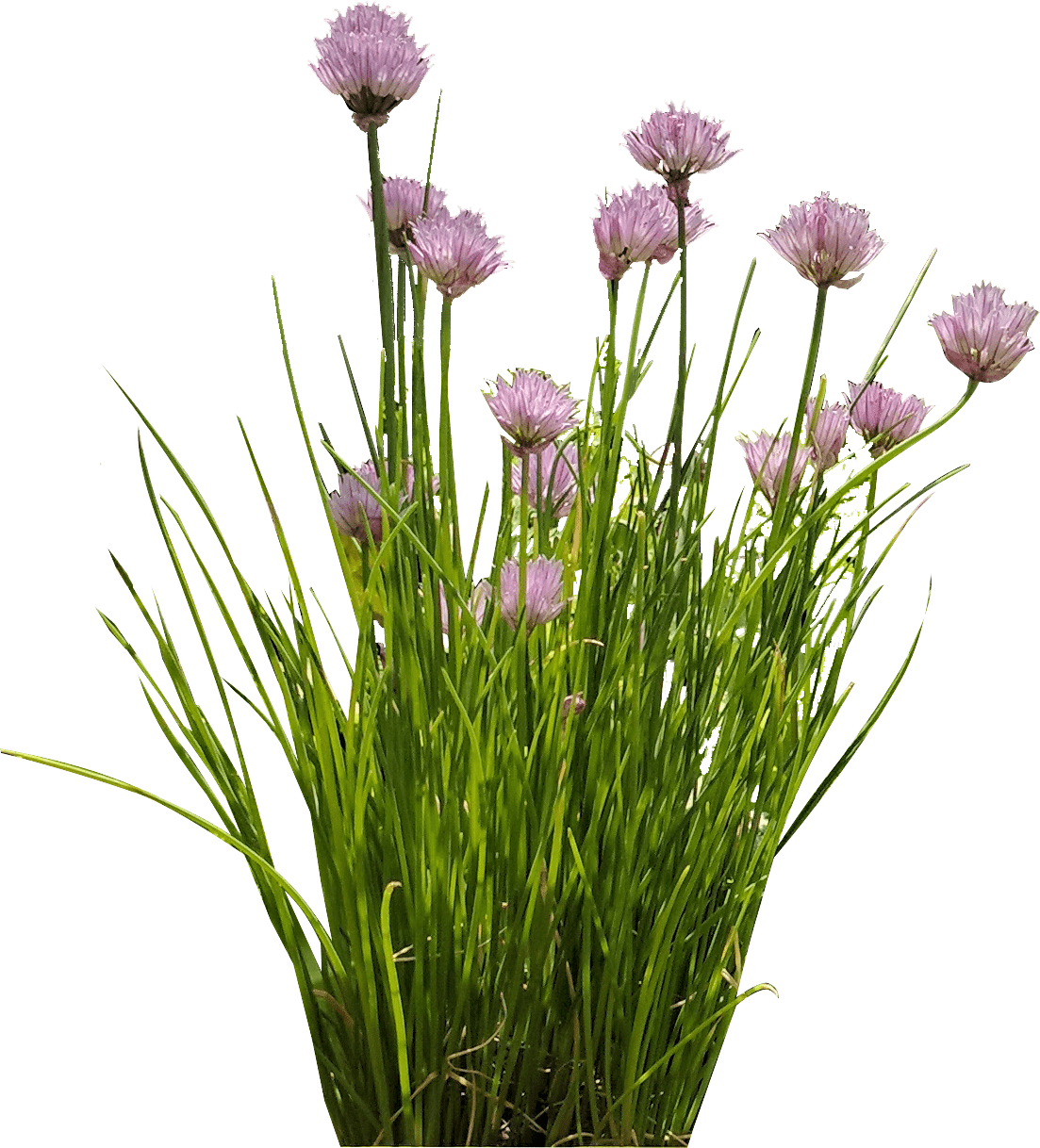
Chives are a perennial herb in the Allium family. They are the first herbs to pop up in the spring garden and a welcome sight after a long winter. Onion chives have a lovely lilac coloured bloom in mid-summer while garlic chives have white blooms. Both flowers are edible and add a pretty and spicy flourish to any salad. I like to inter-plant chives between tomatoes, lettuces and other greens. Their long straight leaves provide an interesting textural variation plus their flowers attract a variety of helpful insects, both pollinating and parasitic.
Mint
Mint is another perennial herb but unfortunately it gets a bum rap because of its invasive growth habit. True, it spreads like crazy and can soon take over a garden or mixed herb planter, but it can also thrive where other crops may not, making it a welcome ground cover for those hard to cultivate spaces. Plus, it’s a workhorse in the kitchen. It’s a versatile plant that can be used in drinks, desserts, smoothies, cold rolls or salads. My absolute favorite is spearmint or chocolate mint. It’s totally worth living with its wild ways in my opinion.
Sage
I love growing the perennial herb sage because it pairs will with rosemary in a fantastic rub that my sister taught me to make. Combine equal parts fresh sage and fresh rosemary leaves, chop and mix with crushed garlic and kosher salt and leave it to dry in a bowl for a week on your kitchen counter. It fills the room with the most intoxicating aroma and inspires a variety of recipes. Rub it on chicken or pork before roasting or add a few tablespoons to extra virgin olive oil for a fast and easy salad dressing. And who doesn’t love brown butter sage gnocchi?
Why wait until late May to start your vegetable garden when you can be planting and eating long before other Johnny-Come-Lately gardeners? These same crops can also be seeded and planted again in late July or early August for an early winter harvest. Don’t miss out on these delicious crops that are just as cold hardy as us Canadians!
